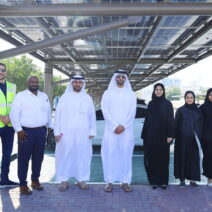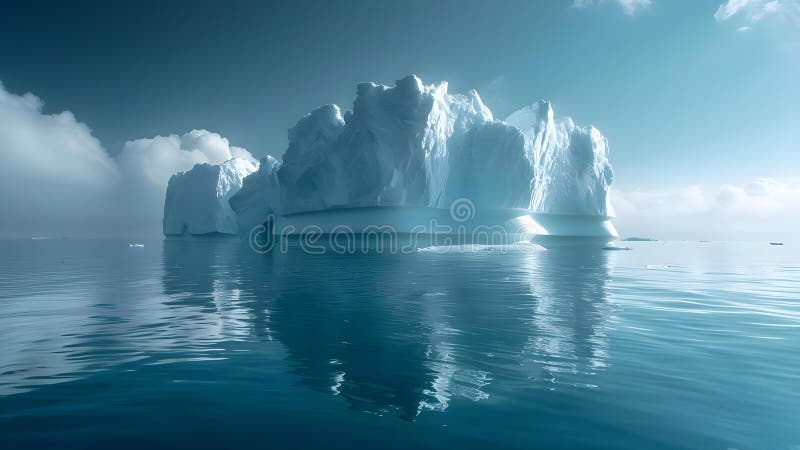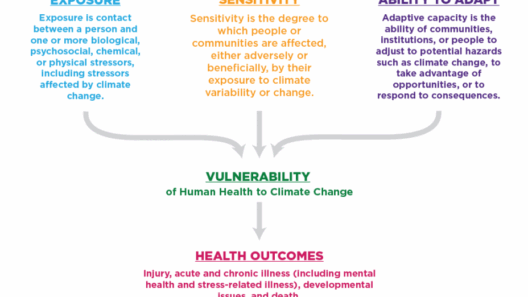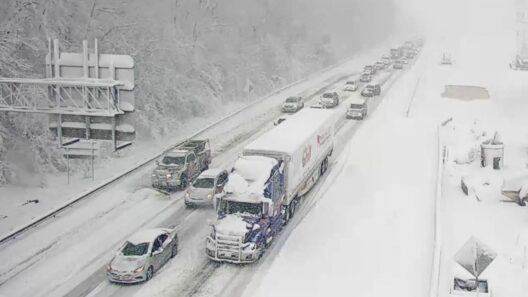Climate change stands as one of the most pressing challenges faced by humanity today. Its repercussions reverberate through ecosystems, economies, and societal structures. Among the most vivid manifestations of climate change are the alarming phenomena of melting ice and rising sea levels. These processes are not merely environmental concerns; they elicit profound social reactions and can catalyze widespread public unrest. Understanding the intricacies of these changes and their multifaceted consequences is crucial for galvanizing action and fostering resilience.
One of the most poignant symbols of climate change is the melting of icebergs and glaciers. Icebergs, those colossal behemoths of frozen freshwater, play a vital role in regulating global sea levels. However, with rising temperatures—driven primarily by anthropogenic greenhouse gas emissions—these giants are disintegrating at an unprecedented rate. The Arctic, once a bastion of ice, has seen dramatic declines in sea ice extent. The polar regions, crucial indicators of climate health, are warming nearly twice as fast as the global average.
This melting process has dire implications. As glaciers retreat, freshwater resources are compromised, creating potential shortages for millions who rely on glacial meltwater for drinking and irrigation. In regions such as the Himalayas, which feed major river systems, the consequences of glacial retreat are particularly ominous. Water scarcity can lead to intensified competition over resources, potentially igniting conflict among nations and communities.
Moreover, the consequences are not limited to freshwater availability. The thermal expansion of seawater, coupled with the influx of freshwater from melting ice, contributes to rising sea levels—an issue that threatens coastal communities worldwide. Cityscapes such as Miami, New Orleans, and much of Bangladesh are already witnessing the tangible effects of this encroaching tide. Frequent flooding, saltwater intrusion into freshwater aquifers, and erosion are prevalent. As homes and livelihoods are jeopardized, the psychological toll on populations can lead to rising anger and frustration.
In parallel with rising sea levels, the phenomenon of climate change fosters biodiversity loss. The delicate equilibrium of ecosystems is disrupted as species struggle to adapt to rapid environmental shifts. Coastal habitats, including mangroves and coral reefs, serve as critical buffers against storms and natural barriers for marine life. However, as sea levels rise, these ecosystems face submersion and degradation, resulting in habitat loss. The ramifications of such loss are dire; diminished biodiversity destabilizes ecosystems, which can further exacerbate climate changes through feedback loops that heighten warming.
This erosion of biodiversity not only has ecological implications but also economic consequences. Many communities, especially those that depend on fisheries and tourism, experience diminishing returns as natural resources dwindle. Fishing stocks can collapse, directly impacting food security and livelihoods, while tourism in vulnerable areas may decline as natural beauty is compromised by climate impacts. The frustration of communities can translate into civil unrest, as people grapple with food shortages and loss of employment.
Beyond environmental and economic challenges, climate change catalyzes a broader sociopolitical discourse. It is increasingly evident that marginalized communities are disproportionately affected by climate-related issues. Low-income areas, often located in flood-prone zones or regions with inadequate infrastructure, face the gravest threats. The intersectionality of climate change and social justice becomes acutely pronounced as these populations bear the brunt of both environmental degradation and systemic inequalities. This disparity can foster anger and mobilization, with affected communities demanding immediate action from governments and corporations alike.
Furthermore, the emotional ramifications of climate change can lead to heightened mental health issues. Anxiety, depression, and trauma are increasingly recognized as outcomes of climate-related disasters and ongoing environmental stress. The juxtaposition of witnessing one’s environment deteriorate, combined with an overwhelming sense of helplessness, breeds despair among many individuals. This mental anguish can contribute to a cycle of anger and apathy, as people struggle to reconcile their environmental realities with everyday life.
To mitigate these effects, proactive measures must be implemented. Climate adaptation strategies, such as the construction of resilient infrastructure and the restoration of natural buffers, are essential in protecting vulnerable areas. Investments in renewable energy sources not only reduce carbon footprints but also provide economic opportunities that can alleviate some societal inequities. Furthermore, fostering community-led initiatives that prioritize education and awareness can empower individuals to take action within their local contexts.
In conclusion, climate change presents a formidable array of challenges. Melting ice and rising seas serve as harbingers of broader, more complex societal consequences, including resource scarcity, economic decline, and social unrest. It is imperative for stakeholders—from policymakers to community leaders—to recognize the interconnectedness of these issues. As the world continues to grapple with the realities of climate change, promoting resilience and fostering equitable solutions will be paramount. A collective commitment to sustainability and environmental stewardship is not merely an ethical obligation; it is a necessity for ensuring the future of our planet and its inhabitants. The time for action is now.








